|
Research Title/ Field
|
Article (Abstract)
|
Download
|
|
.
.
Effect of probiotic feed additives on broiler chickens health and performance
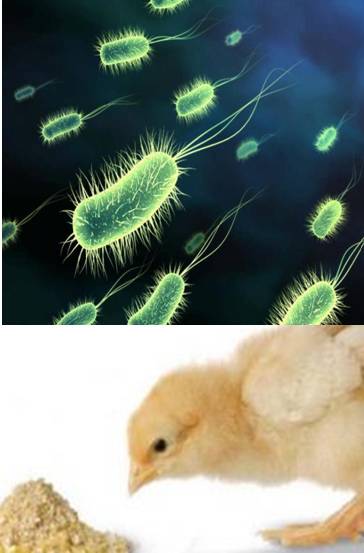
|
Original Research, B21
Alloui N, Chafai S, Alloui MN.
Online J. Anim. Feed Res., 2(2): 103-107, 2012.
ABSTRACT: Antibiotics were very important pieces of the puzzle that enabled the poultry production to move from a backyard flock based industry to the large-scale production facilities of today. Public health professionals have suggested that the use of subtherapeutic antibiotics in animal production may be partially responsible for the development of antibiotic resistant bacterial populations. The probiotics may be substituted by antibiotics (growth promoting) in certain cases. Pediococcus acidilactici is a bacterial probiotic used in this experience. 16000 broiler chickens were assigned in two experimental groups: treatment (109 cfu/kg of feed of Pediococcus acidilactici MA18/5M) and control. In each group 8000 broiler chickens were allocated in the same batch and divided by a physical barrier. Individual live weight of a sample of 200 birds for each group from day 0 to day 56 was measured weekly. Feed intake, feed efficiency, mortality, carcass quality, serum lipids (cholesterol and triglycerides) and number of white blood cells, were recorded per group. The administration of Pediococcus acidilactici affected positively the growth performance of broilers (2586.43 vs. 2252.79 g, p≤0.01) and feed conversion ratio (2.00 vs. 2.5). There were no significant difference between groups in dressing, breast meat and thigh percent, at the end of day 56. Analysis of variance showed significant difference between treatments for serum lipids (p≤0.01). Mortality was almost similar in both groups (6.56 vs. 6.51). The numbers of white blood cells were significantly affected by dietary treatment (p≤0.01).
Key words: Probiotic, Broiler chickens, Health and Performance of production
|

|
|
Utilization of Leucaena (Leucaena leucocephala) leaf meal as partial replacement for fishmeal in the diet of broiler chickens
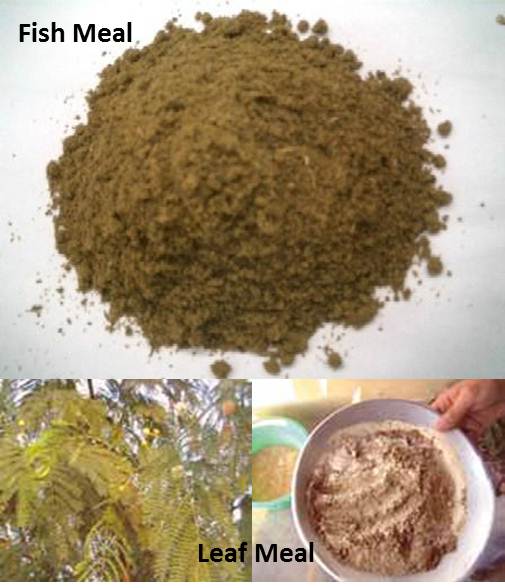
|
Original Research, B22
Zanu HK, Mustapha M and Addo Nartey M. 2012.
Online J. Anim. Feed Res., 2(2): 108-112, 2012.
ABSTRACT: A six-week experiment was conducted to assess the response of cobb broiler chicks to diets containing varying levels (0%, 5%, 10% and 15%) of Leucaena leaf meal (LLM). The 4 dietary treatments were allocated to the birds in a completely randomized design. Each treatment consisted of three replicates and fifteen birds per replicate. The birds were fed experimental starter diets (14-28 d) and finisher diets (28-56 d). Feed and water were provided ad libitum. Final weight, growth rate and feed conversion ratio significantly (P<0.05) declined as the level of LLM in the diets increased. Dressed and carcass weights also reduced significantly (P<0.05) with increasing level of LLM in the diets. All organ characteristics except liver kidney were significantly (P<0.05) affected by dietary treatments. Haematological variables were also not affected (P<0.05). The total cholesterol and Low Density Lipoprotein of serum decreased (P<0.05) when LLM was included to the diets. Feed cost reduced when LLM was incorporated in the diets, but the net revenue declined as LLM in diet increased. In this study inclusion of LLM in diets for broiler chickens did not affect their health status, but depressed their growth.
Key words: Feed cost, Haematology, Leucaena leaf meal, Performance, Serum biochemistry
|
 |
|
Anti-nutritional factors in sorghum: chemistry, mode of action and effects on livestock and poultry
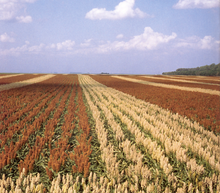
|
Original Research, B23
Etuk EB, Okeudo NJ, Esonu BO, Udedibie ABI. 2012.
Online J. Anim. Feed Res., 2(2): 112-119, 2012.
ABSTRACT: Sorghum basically contains two major anti-nutritional factors; tannin, a polyphenolic compound located in the grain and, dhurrin a cyanogenic glucoside located mainly in the aerial shoot and sprouted seeds. Tannins are high in sorghum with brown pericarp and no testa and very low in unpigmented grains. The main anti-nutritional effects of tannins are: reduction in voluntary feed intake due to reduced palatability, diminished digestibility and utilisation of nutrients, adverse effects upon metabolism and toxicity. The level of tannins present in sorghum seems to be the predominant factor that influences its nutritional value. Drying, soaking, grinding and pelleting appear to reduce tannin content in feedstuffs while diet supplementation with methyl group donors like choline and methionine reduce the problems associated with tannins in livestock. Dhurrin, on enzyme action readily yields hydrogen cyanide (HCN). The quantity of HCN in sorghum varies with cultivar and the growth condition but diminishes with age. Excess cyanide ion can quickly produce anoxia of the central nervous system through inactivating the cytochrome oxidase system and death can result within a few seconds. Making fodder into hay or silage however, destroys the poison.
Key words: Tannin, Dhurrin, Sorghum, Livestock, Poultry
|

|
|
Breed, Sex And Ambient Temperature Effects on Duration of Behavioural Traits of Rabbits (Oryctolagus Cunniculus) Reared in The Humid Tropics
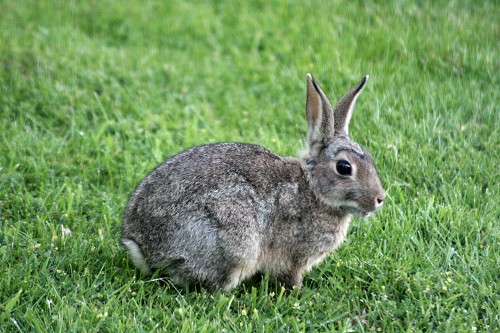
|
Original Research, B24
Ogbu CC, Ani AO, Nwogwugwu P.
Online J. Anim. Feed Res., 2(2): 120-126, 2012.
ABSTRACT: Breed, sex and ambient temperature effects on the nocturnal and diurnal duration of feed and water intakes, standing and lying down behaviour of rabbits were investigated. Twelve male and female weaner rabbits (New Zealand White, Dutch Black and American Chinchilla, 8 weeks old) were housed individually in cells measuring 51 cm x 51 cm each. They were fed an 18% Crude Protein pelleted diet, forages (Centrosema pubescens, Ipomea batatas and Tridax procumbens) and water ad libitum for 8 weeks. Data were collected at three hourly intervals from 18:00 hrs to 06:00 hrs (nocturnal) and from 06:00 hrs to 18:00 hrs (diurnal). Durations of feed intake, water intake, lying down and standing were measured. Ambient temperature differed significantly (P ≤ 0.05) between test periods. Breed and sex did not influence the parameters studied. While ambient temperature significantly (P ≤ 0.05) influenced all traits, test period significantly (P ≤ 0.05) influenced duration of water intake, duration of standing and duration of lying down but not duration of feed intake. Interaction effects of test period x ambient temperature affected (P ≤ 0.05) duration of water intake and duration of lying down within the nocturnal period and duration of feed intake, duration of water intake and duration of lying down within the diurnal period. Highly significant (P ˂ 0.01) phenotypic correlation was observed between duration of feed intake and duration of standing (rp = 0.10), duration of feed intake and duration of lying down (rp = - 0.46), duration of water intake and duration of standing (rp = 0.09), duration of water intake and duration of lying down (rp = - 0.29), ambient temperature and duration of water intake (rp = 0.64), duration of standing and duration of lying down (rp = - 0.51) and between ambient temperature and duration of lying down (rp = - 0.42).
Key words: Ambient Temperature, Behavioural Trait, Diurnal, Ethology, Nocturnal, Rabbit, Stress, Test Period, Thermoneutrality
|

|
|
Nutrient digestibility, carcass characteristics and plasma metabolites in kids fed diets supplemented with chromium methionine
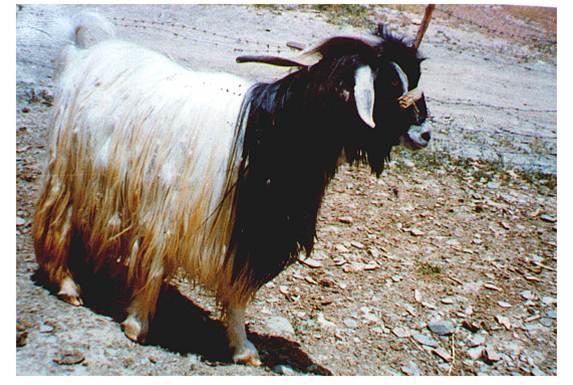
|
Original Research, B25
Emami A, Zali A., Ganjkhanlou M., Akbari Afjani A.
Online J. Anim. Feed Res., 2(2): 127-132, 2012.
ABSTRACT: This study was carried out to evaluate the effects of different levels of chromium methionine (CrMet) on nutrient digestibility, carcass characteristics and plasma metabolites of male kids. Thirty-two male Mahabadi goat kids (average initial body weight (BW) = 22±2 kg, 4 months) were allocated in a completely randomized design with four treatments: 1) control (without Cr), 2) 0.5, 3) 1 and 4) 1.5 mg Cr as Cr-Met/animal/day. Diets were same (ratio of forage: concentrate was 30:70) except for top-dress addition of Cr-Met and fed in two equal meals (08.00 and 16.00h), Also orts collected before morning meal. Animals were kept in individual pens for 100 days. Kids were slaughtered at the end of the experiment and carcass characteristics determined. The results showed that dressing percentage was not affected by treatment, but, Cr supplementation reduced 10th rib back fat thickness by 30.30% (P<0.01), and tended to increase longissimus muscle area (P<0.09). Supplemental Cr increased percentage of neck (P<0.05) and proximal pelvic limb (P<0.08). Addition of different levels of Cr-Met failed to significantly effect on (P>0.01) the post-prandial changes in plasma levels of cholesterol, urea N, total protein, triglyceride and albumin, However, post-prandial of plasma glucose decreased by Cr (P<0.05). NDF and organic matter digestibility increased in the kids fed added dietary Cr compared with the control group. it was concluded that diet supplementation with chromium methionine could be improved nutrient digestibility, carcass characteristics and peripheral glucose utilization in goat kids.
Key words: Chromium-methionine, Mahabadi goat kid, Digestibility, Plasma metabolites, Glocuse
|

|
|
Level of adoption and constraints of scientific backyard poultry rearing practices in rural tribal areas of Sikkim, India
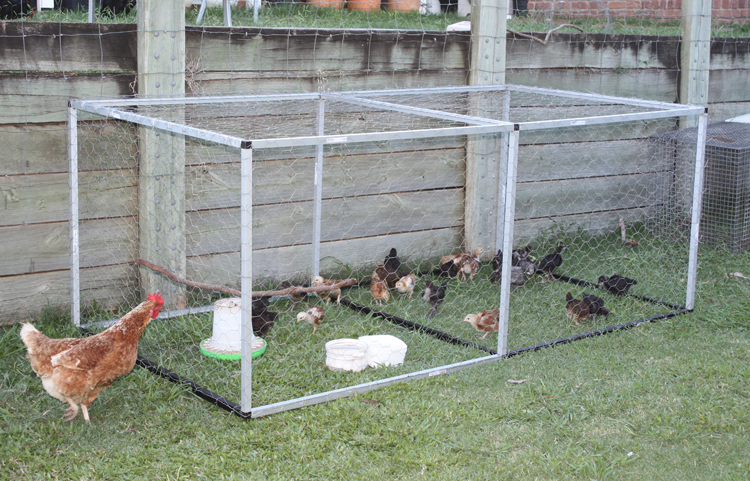
|
Original Research, B26
Nath B.G., Toppo S., Chandra R., Chatlod L.R., Mohanty A.K.
Online J. Anim. Feed Res., 2(2): 133-138, 2012.
ABSTRACT: A study was conducted on level of adoption and constraints of backyard poultry rearing practices in rural tribal areas of Sikkim. The data were collected from 125 respondents of Dzongu area, North Sikkim through personal interview with the help of questionnaire. From the present study it was found that 64.8% respondents were medium level adopters followed by high level (19.2%) and low level (16%) adopters. Housing (43.2%) were highly adopted followed by feeding and watering (41.6%), marketing (40.0%), general management (39.2%), health care practices (36.8%) and breeding practice (33.6%). The overall adoption of different backyard poultry rearing practices showed medium level adoption. Non availability of backyard poultry chicks, non-availability of medicine, high incidence of diseases, lack of knowledge about scientific practices, lack of market, attack of predators etc. were the major constraints faced by backyard poultry farmers. The study also pointed some suggestions for solving the constraints regarding backyard poultry rearing practices in Dzongu, North Sikkim.
Key words: Adoption, Backyard poultry, Farming practice, Constraint, Scientific
|

|
|
Effects of different silage preservatives on silage quality of Pennesitum Purpureum harvested at different harvesting periods
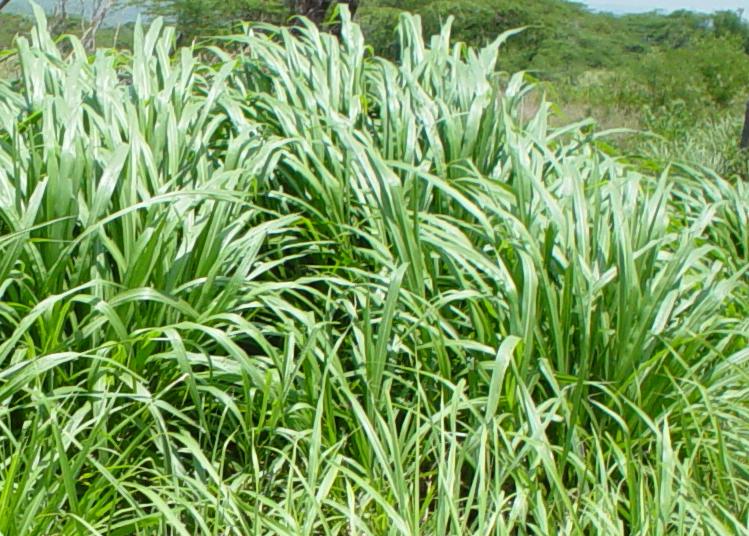
|
Original Research, B27
Sebolai TM, Aganga AA, Nsinamwa M and Moreki JC.
Online J. Anim. Feed Res., 2(2): 139-144, 2012.
ABSTRACT: The study was conducted to determine the effects of preservatives on the chemical composition of elephant grass (P. purpureum Bana cv.) harvested from N-fertilized and unfertilized treatments at different periods (3, 6 and 9 months). The plants were grown on 1st November 2008 and harvested every 3 months until July 2009. The grass was chopped and a 500 g sample obtained and was mixed with 4% molasses, 4% molasses+0.25% urea and 2.5% dicalcium phosphate, respectively with plain silage as a control. The samples were ensiled with respective preservative in duplicates and were analyzed for pH and proximate after 30 days of ensiling. Molasses added silage had a higher (P<0.05) DM at 3 months on both N-fertilized and unfertilized treatments, whereas molasses added silage prepared from unfertilized treatment harvested at 3 months of growth, had lowest (P<0.05) pH and was highly (P<0.05) digestible but digestibility declined as the plant matured.
Key words: Elephant grass, Harvesting periods, Silage preservatives, Silage quality.
|

|
|
Characteristics and constraints of pig production under rural condition in Sikkim
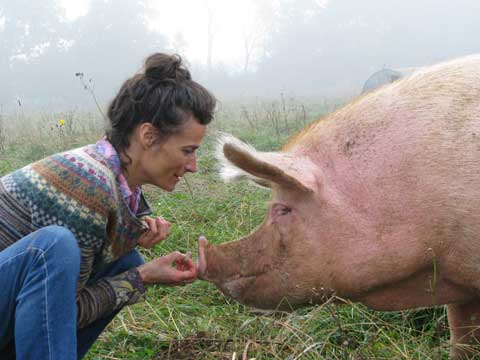
|
Original Research, B28
Nath B.G., Chandra R., Toppo S., Chatlod L.R., Mohanty A.K.
Online J. Anim. Feed Res., 2(2): 145-148, 2012.
ABSTRACT: The present study was undertaken to know the production and management practices followed by the farmers and the common constraint of pig production in rural area of Sikkim. The data were collected from 100 respondents through personal interview with the help of questionnaire on different aspects namely housing, breeding, feeding, health care, management practices, economics and the common problems for pig production. In the present study it was observed that 95% farmers constructed their pigsty with locally available wood/bamboo with traditional system. Majority (60%) of the farmers reared cross-bred pigs and offered kitchen waste to their pigs while only 5% of them offered concentrate feeds. Vaccination and deworming was followed by 30 per cent and 35 per cent of farmers respectively. Daily cleaning of pigsty was followed by 50 percent of the farmers and castration and weaning was to be practiced by majority of farmers. Special attention to the pregnant sows and care after farrowing was followed by 69 and 75 per cent respectively. Farmers market their pigs at the age of 1 year or above when they attained the body weight of 85-90 kg or more. Lack of adequate credit facilities, inadequate scientific knowledge on pig farming, lack of veterinary facility, lack of breeding and lack of marketing facilities were observed to be the major constraints perceived by the farmers. The study revealed that the development of pig production is necessary in this area as it will not only fulfill the demand but also help to uplift the economic status of farmers.
Key words: Production, Constraint, Pig, Breeding, Economic, Feeding, Health, Housing, Sikkim
|

|
|
Prediction of corrected in situ forage protein degradability by the Cornell method
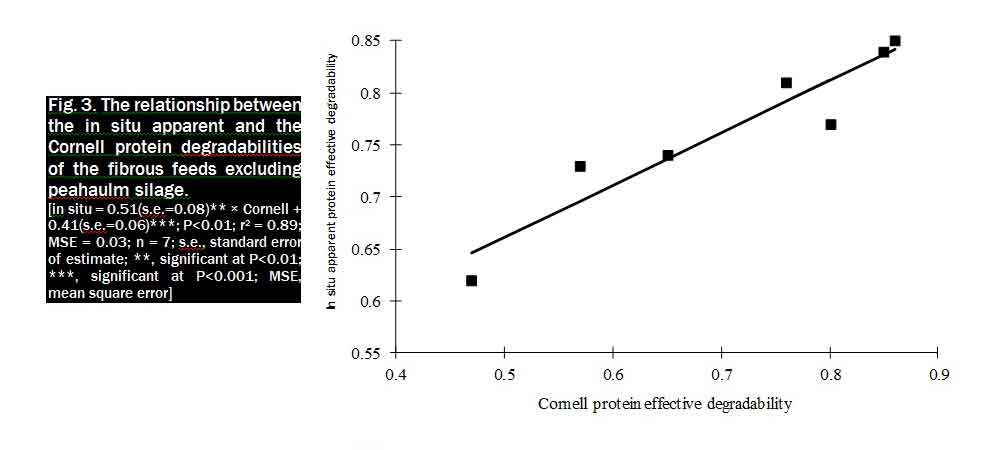
|
Original Research, B29
Avornyo FK.
Online J. Anim. Feed Res., 2(2): 149-154, 2012.
ABSTRACT: An experiment was conducted on eight fibrous feeds to compare the Cornell rumen degradable protein values with those of the in situ method that have been corrected for microbial contamination. Samples of hay, sugarbeet pulp, dried lucerne, maize silage, peahaulm silage, fermented whole crop wheat and two different grass silages were used for the Cornell method. A corresponding in situ experiment was carried out on the same samples to estimate their rumen degradable protein values. Regression was used to relate the Cornell rumen degradable protein to that of the in situ technique. Rumen degradable protein estimates observed using the Cornell method were, on average, 0.06 and 0.16 lower than their corresponding in situ uncorrected and corrected values, respectively, with the latter being statistically significant (P<0.01). However, regression analysis between the Cornell and the in situ uncorrected rumen degradable protein, using all eight feeds, was statistically significant (r2 0.59; P<0.05). The relationship did not improve when the Cornell values were compared with the in situ corrected values for the eight feeds (r2 0.55; P<0.05). On the basis of inadequate preparation of the peahaulm silage sample for the in situ experiment, it was removed from the data set and the ensuing equation accounted for 0.89 of the variability in the in situ uncorrected rumen degradable protein (P<0.01). A better agreement was observed between the Cornell and the in situ corrected rumen degradable protein (r2 0.95; P<0.001). The Cornell method therefore significantly correlated with the in situ technique for fibrous feeds. Correlation between the methods could improve if microbial contamination was removed from the analysis. The in situ rumen degradable protein values appeared to be bigger than the associated Cornell values. The Cornell adopted rates of degradation therefore need to be evaluated.
Key words: Cornell, in situ, protein, forages, degradability, feeds
|

|
|
Rearing of fry to fingerling of Saul (Channa striatus) on artificial diets
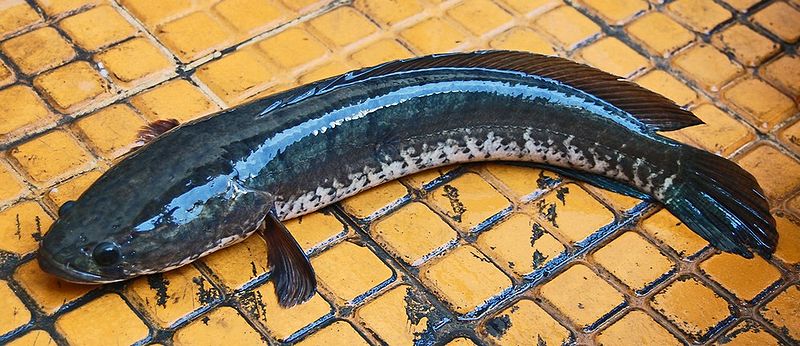
|
Original Research, B30
Srivastava PP, Dayal R, Chowdhary S, Jena JK, Raizada S., Sharma P.
Online J. Anim. Feed Res., 2(2): 155-161, 2012.
ABSTRACT: Three diets (F1, F2 and F3) containing protein levels of 38.60 to 38.98 % crude protein were used to assess the growth performances of Channa striatus fry (weight 0.52±0.0 to 0.53±0.02 g) in a completely randomized experiment design in five replicate set for 12 weeks. The fry were reared in 15 FRP tanks at a stocking density of 100 fry m3 and fed ad libitum. The diets F1 and F3 showed significantly (P<0.05) low survival levels of 74±1.2% and 76±4.4% in comparison to diets F2 (82±3.1%) 84th day of rearing. The net biomass gain %, length gain %, SGR, PER and per day weight gain were found significantly (P<0.05) higher and FCR low with diet F2 in comparison to diets F1 and F3. The proximate analysis of carcass showed that the fishes fed diets F2 had significantly (P<0.5) higher deposition of crude protein and lipids in the tissue. The study revealed that the growth performance of C. striatus fry is better in feed F2 and the fry could be reared to fingerling size on formulated diets.
Key words: Channa striatus, Survival, Growth
|

|
|
Vitamin d3 induced hypercalcemic response in threatened bronze feather back (Notopterus notopterus, Pallas)
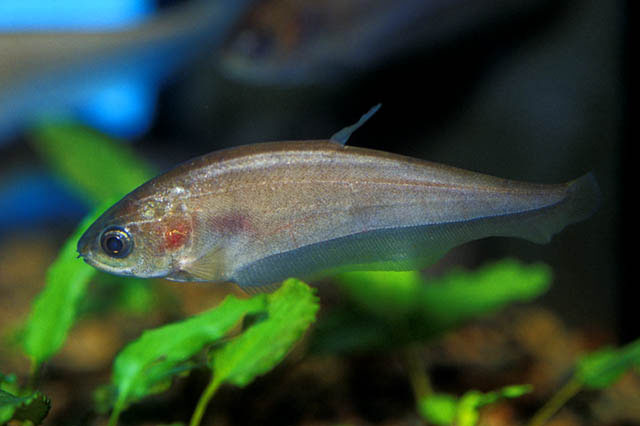
|
Original Research, B31
Srivastava SM, Srivastava PP, Dayal R, Chowdhary S, Lakra WS, Singh SP, Pandey AK.
Online J. Anim. Feed Res., 2(2): 162-165, 2012.
ABSTRACT: Vitamin D3 (0.0 IU.100 g body weight (BW)-l.day-l, 100 IU.100 g BW-l.day-l, 500 IU.100 g BW-l.day-l and 1000 IU.100 g BW-l.day-l) was administered intra-peritoneally (ip) to the freshwater threatened Bronze Featherback, Notopterus notopterus kept in freshwater for 9 days. Analyses of serum calcium levels were performed at 0, 6 hr. and 1, 2, 3, 5 and 9 days (four grow-out Notopterus notopterus from each group of ip doses at each interval). Administration of vitamin D3 elevated the maximum serum calcium elevation occurred at day 2 freshwater in 500 IU.100 g BW-l.day-l (11.2±0.92 mg.dL-l) and in 1000 IU.100 g BW-l.day-l (12.0±0.46 mg.dL-l) of the fish maintained in the fresh water. There was gradual decrease in calcium levels from day 3 and became normocalcemia on day 9. Out of the three concentrations of ip Vitamin D3 (100 IU.100 g BW-l.day-l, 500 IU.100 g BW-l.day-l and 1000 IU.100 g BW-l.day-l) the sharp elevation of serum calcium recorded in both 500 IU.100 g BW-l.day-l and 1000 IU.100 g BW-l.day-l. The control (0.0 IU.100 g BW-l.day-l) fish serum calcium behaves like normocalcemia (8.25±0.21 mg.dL-l) in every sampling up to day 2. Results demonstrated that ip Vitamin D3 exerted a dose-dependent and pronounced hypercalcemic effect in freshwater threatened Bronze Featherback, Notopterus notopterus.
Key words: Notopterus notopterus, Threatened fish, Vitamin D3, Hypercalcemia
|

|
|
Comparison of three approaches of estimating protein b2 and b3 degradation rates in the rumen of sheep

|
Original Research, B32
Avornyo F.K.
Online J. Anim. Feed Res., 2(2): 166-173 2012.
ABSTRACT: A method that involved the gravimetric measurement of the amounts of feed protein B2 (feed protein that is insoluble in borate phosphate buffer but soluble in neutral detergent solution) and protein B3 (feed protein that is insoluble in neutral detergent solution but soluble in acid detergent solution) that remain after each in situ incubation period, was used to obtain the degradation rates of these protein pools in six different feeds. These degradation rates were then compared with degradation rates provided by the Cornell Net Carbohydrate and Protein System for nominally similar feeds in order to establish the extent of agreement between these sets of data. Curve peeling technique was also used on the in situ results of this experiment to generate degradation rates for comparison with the gravimetric and the Cornell values. The study showed that the gravimetric, the curve peeling and the Cornell values were not statistically different for the degradation rates of protein B2 even though the gravimetric estimates were the highest followed by curve peeling and then the Cornell values. For protein B3, the degradation rate estimated with the gravimetric method was highest followed by the curve peeling method and then the Cornell values (P<0.01). The degradation rates assigned to protein B3 in the Cornell databank needs re-examination. There is a need for further application of the gravimetric technique to establish if it gives higher estimates of the degradation rates of proteins B2 and B3 in a range of feedstuffs.
Key words: Gravimetric method, Cornell, In situ, Degradation rate, Curve peeling
|

|
|
Comparative study of WLR of Channa striatus of fry- fingerling, grow-outs and adults of gangetic plains

|
Original Research, B33
Dayal R, Srivastava PP, Bhatnagar A, Chowdhary S, Lakra WS, Raizada S, Yadav AK. 2012.
Online J. Anim. Feed Res., 2(2): 174-176, 2012.
ABSTRACT: In the present study the Weight – Length relationships (WLR) are described for the three stages of life of the Snakehead, Saul, Channa striatus, collected from the districts of Barabanki, Lucknow and Unnao in Uttar Pradesh in 2008-09. Method used for analysis of fisheries data on the WLR is (W=aLb) and this study reports the parameters ‘a’ and ‘b’ of the length–weight relationships for one hundred numbers of fry/ fingerlings, thirty-seven grow-out fishes and eighty-nine number of adult fishes collected from the same geographical area. The weight and total length of fry/ fingerlings ranged from 340 to 650 mg and 35 to 45 mm respectively (a=W/L3, 0.0060 to 0.0088; log W=log a + b*(log L), 3.92821 to 4.72919; b=(log W-log a)/log L, 3.89643 to 4.11143). The recorded weight and total length of the grow-outs ranged between 9 to 93g and 10.9 to 25.4 cm respectively (a=W/L3, 0.0082 to 0.0146; log W=log a + b*(log L), 0.95424 to 1.96848; b= (log W-log a)/log L, 3.0). In case of adults the weight and total length recorded ranged between 74 to 476g and 22.9 to 42.4 cm respectively (a=W/L3, 0.0054 to 0.0121; log W=log a + b*(log L), 2.39029 to 4.17039; b=(log W-log a)/log L, 3.40747 to 3.95845). Since fishes were collected during the months of April - May, 2008 and November, 2009, the parameters estimated in this study are considered only for these seasons, because WLR are not constant over the entire year and vary according to factors such as temperature, food availability, feeding rate, gonadal development and spawning period. The result suggests that these fishes grow in a pattern from early life stage to adult if grown in the same environmental conditions.
Key words: Weight-Length, Channa striatus, Fry, Fingerlings, Grow-outs, Adults, Gangetic plains
|

|
|
Current status, challenges and opportunities of rabbit production in Botswana

|
Original Research, B34
Moreki JC and Seabo D
Online J. Anim. Feed Res., 2(2): 177-181, 2012.
ABSTRACT: This review highlights the current status of rabbit production, challenges facing the industry and opportunities available. Rabbit farming in Botswana is in its infancy and the rabbit population is estimated to be less than 1000. However, this value is a gross underestimate due to poor monitoring by government extension services. In Botswana, rabbits are mainly kept in the backyards, indicating that intensive systems have not yet been developed. Rabbits have small body size, short gestation period, high reproductive potential, rapid growth rate and ability to utilize forages. Compared to beef, chicken, mutton, chevon and chicken, rabbit meat has low cholesterol, high protein and low fat contents. Rabbit production can be integrated into small farming systems, with the rabbits being fed on crop residues, weeds, poultry droppings, and kitchen and garden wastes. The manure can be used to fertilize soils. The major challenges in rabbit production are inadequacy of breeding stock, inadequate rabbit feeds, poor management (feeding, housing and health care), lack of research support, lack of technical support from extension services, lack of access to credit and inadequate supply of equipment. The major opportunity available to the rearers is that the market is vast due to the small rabbit population in the country. The attributes of rabbits suggest that rabbit farming is likely to play an important role in nutrition, poverty alleviation and food security, especially in countries with higher unemployment levels and HIV/AIDS prevalence rates such as Botswana.
Key words: Botswana, Challenges, Cholesterol, Manure, Opportunities, Rabbits
|

|
|
Use of stylosanthes hamata and Sida acuta as sole feeds for rabbits (Oryctolagus cuniculus)
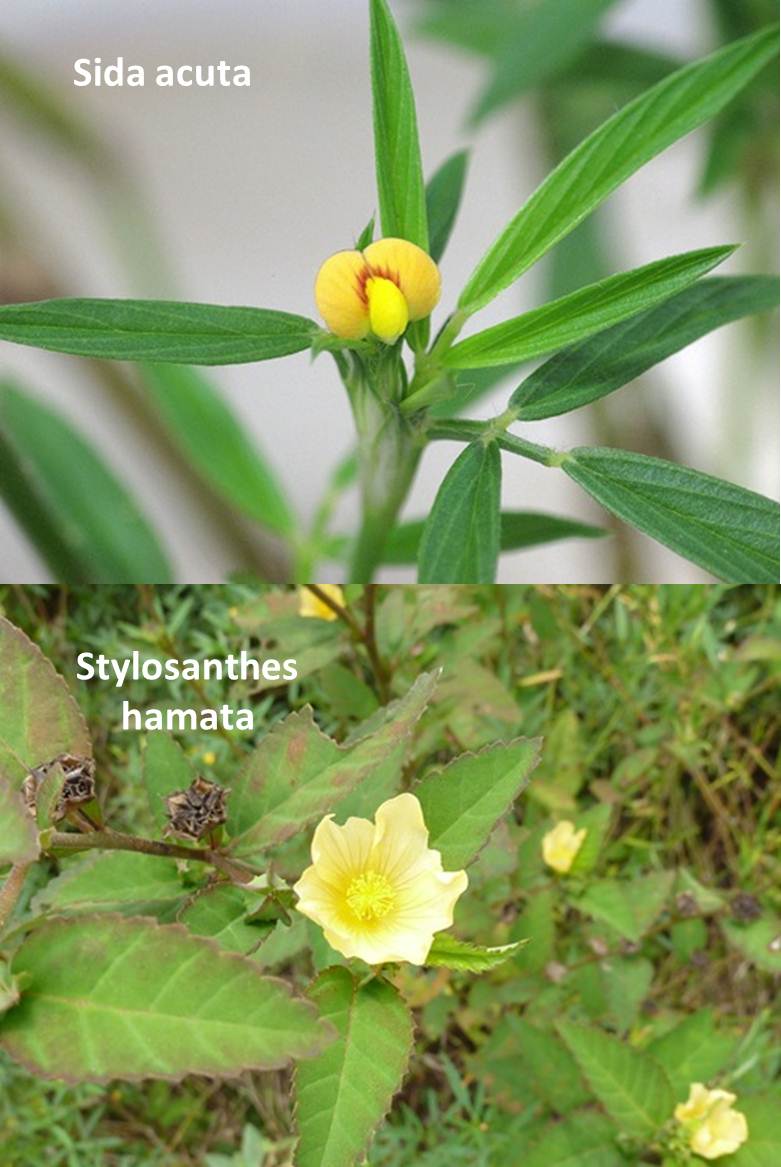
|
Original Research, B35
Naandam J, Padi BAY, Bigol P, Mensah-Kumi R.
Online J. Anim. Feed Res., 2(2): 182-188, 2012.
ABSTRACT: A 42-day feeding trial was conducted to determine whether Stylosanthes hamata and Sida acuta could be used as sole feeds for local weaner rabbits. The experimental diets had three treatments with three replicates each in a Completely Randomized Design. The experimental diets were T1 (100% Stylosanthes hamata), T2 (50% Stylosanthes hamata 50% Sida acuta) and T3 (100% Sida acuta). The growth parameters measured/calculated were mean weekly and total feed intake (g), mean weekly and total weight gain (g) and final weight (g). Blood parameters considered included haemoglobin (Hb), packed cell volume (PCV), red blood cells (RBC), mean corpuscular volume (MCV), mean corpuscular haemoglobin (MCH), mean corpuscular haemoglobin concentration (MCHC) and white blood cell (WBC) differential counts (neutrophils, lymphocytes, eosinophils, and monocytes). Additionally, meat colour, juiciness, tenderness and flavour were also noted after animals were sacrificed. Data was analyzed using ANOVA in GenStat (Discovery Edition). There were significant differences (P<0.05) in mean weekly feed intake, total feed intake, mean weekly weight gain, total weight gain and final weight between treatments. T3 animals consumed the highest feed yet T2 animals had the heaviest weight gain at the end of the experiment. Whereas there were no significant differences (P>0.05) between treatments for MCHC and WBC differential counts like neutrophils lymphocytes and eosinophils, significant differences (P<0.05) were observed between treatments for PCV, RBC, MCV and monocytes. The sole Stylosanthes hamata feed significantly (P<0.05) improved meat colour and juiciness, whiles tenderness and flavour, did not record any significant differences (P>0.05) between treatments. The results suggest that Stylosanthes hamata and Sida acuta may have a potential to enhance rabbit growth as a combined feed. Any negative effect on rabbit health either when fed individually or in combination was inconclusive and Stylosanthes in particular as sole feed could improve colour and juiciness of rabbit meat.
Key words: Blood indicators, Growth performance, Meat quality, Sida spp., Stylosanthes spp.
|

|
|
Nutritive profiles in different size groups and body parts of common whelk Hemifuses pugilinus (born, 1778) from Pazhayar, southeast coast of India
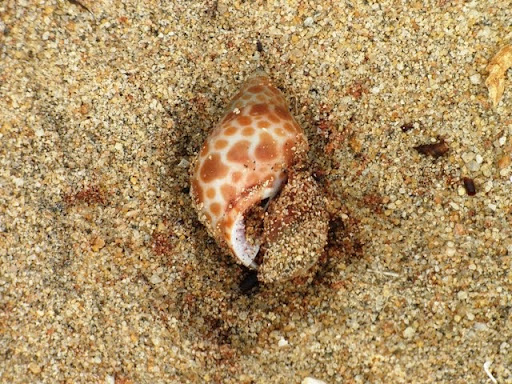
|
Original Research, B36
Sekar V, Ravi V, Dhinakaran A, Rajasekaran R, Ilayaraja C.
Online J. Anim. Feed Res., 2(2): 189-196, 2012.
ABSTRACT: The aim of this study was to determine instead of levels of protein, fat, carbohydrates (proximate composition) and essential fatty acids of different body parts as well as male and female of extensive marine whelk H. pugilinus on dry weight basis. There was a significant difference in protein, lipid, carbohydrate and water contents between various size groups as well as sex (P<0.05). Total protein content was found to be varying from 30.58±0.75 (digestive diverticula) to 57.23±1.48% (Gonads) in size group II of the female body parts respectively, the carbohydrate 3.66±0.28 to 10.35±0.14 whereas the lipid 10.18±0.04 to 14.67±0.35. The water content varied from 58±1.41 minimum digestive diverticula and maximum in 85±1.41 other body tissues. There was considerably 17 fatty acid composition were identified belongs to ten in saturated fatty acids four were monounsaturated fatty acid and 3 were polyunsaturated fatty acid among these, C16:0 (22.62%) and C18:0 (14.45%) were the major components saturated fatty acids and C18: 1 (5.3%) and C20:4n6 (8.66%) were found major mono and poly unsaturated fatty acids. All groups have good source of the nutritive value particularly the size group II (80-100 mm) is effectual results for the present findings and it’s symptomatic of their high nutritional quality for human consumption.
Key words: Common whelk, Fatty acids, Mollusc, Nutritional composition, Pazhayar
|

|
|
Biochemical effect of ginger on some blood and liver parameters in male Newzeland rabbits
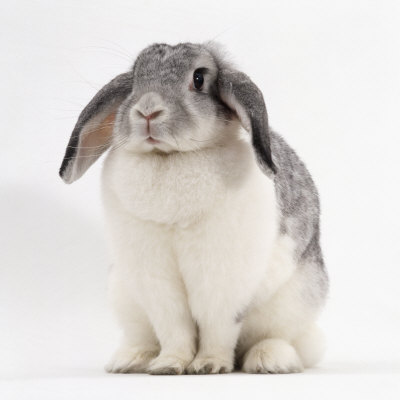 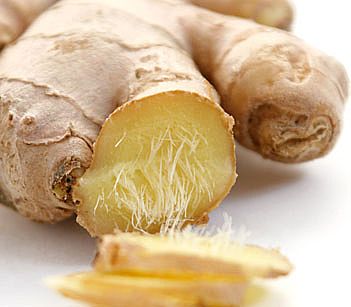
|
Original Research, B37
Lebda MA, Taha NM, Korshom MA, Mandour AElA, El-Morshedy AM.
Online J. Anim. Feed Res., 2(2): 197-202, 2012.
ABSTRACT: The aim of the present study was to investigate the effects of different ginger rhizome treatments on hepatic oxidative stress markers and antioxidant status. Also, the study was extended to show the serum lipid profile, liver and kidney functions and serum glucose. Forty male New Zealand rabbits were allocated into four groups (10 rabbits in each); control, ginger powder, hot extract of ginger and cold extract of ginger. The results revealed that administration of ginger in its different forms significantly reduced malondialdehyde (MDA) level, glutathione peroxidase (GPX) and glutathione-S-transferase (GST) activities, meanwhile, the reduced glutathione (GSH) was significantly increased in liver. Moreover, ginger treatment depleted serum triacylglycerol (TAG), total cholesterol and low density lipoprotein-cholesterol (LDL-c) while the high density lipoprotein-cholesterol (HDL-c) was increased. Ginger administration improved liver functions but unfortunately, the serum creatinine and glucose levels were increased. We concluded that ginger especially hot extract maintain the antioxidant activities, improve liver functions and reduce lipid peroxidation.
Key words: Ginger, Cholesterol, Malondialdehyde, Glutathione
|

|
|
Effect of growth stages and range systems on vegetation attributes, carrying capacity, stocking rate and forage productivity, North Kordofan, Sudan
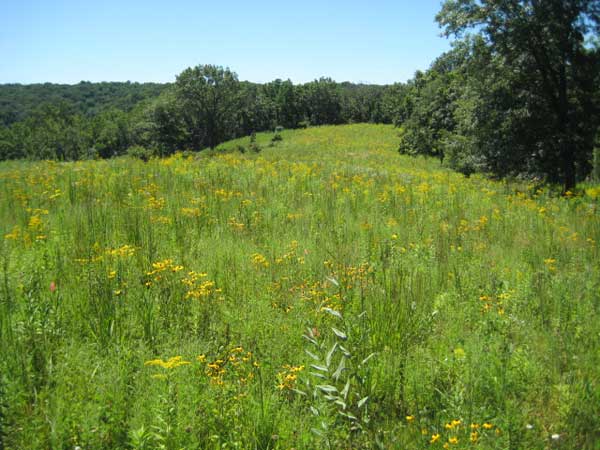
|
Original Research, B38
Abdel Moniem M, El hag A, hassabo AA, Bushara I, Ishag IA, Eisa MO. 2012
Online J. Anim. Feed Res., 2(2): 203-209, 2012.
ABSTRACT: The range vegetation attributes, carrying capacity, stocking rates and forage productivity were studied in close and open range systems at the flowering and seed setting stages during the September and November 2010, respectively, in El Rosa (El-khuwei locality). Sampling was done by locating 2Km2 in close and open range systems in a radiating manner from the centre of each site. Completely Randomized Design (CRD) was used to analyses treatments. Biomass production of plants and plant cover at the flowering stage in the close range system were significantly (P<0.0001) higher than that at the seed setting stage in the open range system. The plant density was significant (P<0.05) higher in the close rang system at the flowering stage and lower at the seed setting stage in the open range system. Bare soil and litter was significantly higher (P<0.0001) in the open range system during the seed setting stage and lower in the close range system during the flowering stage. Forage productivity of plants and shrubs browse kg/ha on rangeland was significantly higher (P<0.05) in the close range system during the flowering stage and lower in open range system at the seed setting stage. Carrying capacity was significantly higher (P<0.0001) in the close range system at the seed setting stage and lower in the open range at the flowering stage. Stoking rates in open range system during the seed setting stage was significantly higher (P<0.0001) and lower in the close range system during the seed setting stage. The frequencies of Huskneet (Cenchrus biflorus), Bano, (Eragrostis tremula), Difra (Echinocloa colonum), leflef Luffa aegyptiaca, Gaw (Aristida sp), Shuleny Zornia glochidiata and Aborakhus Andropogon gayanus were higher in close system during the two stages of growth. Plants such as Abodaib Ceraotheca sesamoid, Bigual Blepharis linarifolia, Tmrfar (Oldenlandia senegalensis), Rabaa (Zalea sp), Himeira Hymerocardia, Diresa (Tribulus terrestris) and Huntot Merremia pinnata recorded higher frequencies in close range system during the flowering stage than in the open range system during the seed setting stage. The Nuida Sida cordofolia had highest frequency in the open range system during the two stages of growth.
Key words: Biomass, Cover, Density, Bare Soil, Litter and Frequency, Forage Productivity, Carrying Capacity, Stoking Rates
|

|
|
The effects of parity number, season and year of calving of Sudanese Zebu cattle (Butana) on the lactation curve and milk yield
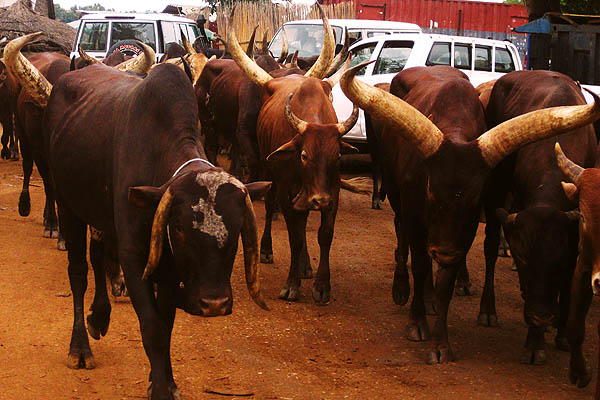
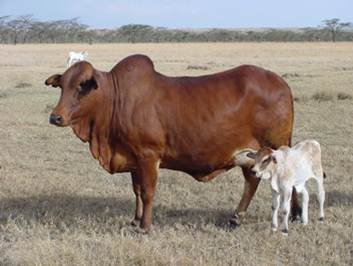
|
Original Research, B39
Ahmed MMM, Ariek KDA, Bushara I, A/Wabab KA.
Online J. Anim. Feed Res., 2(2): 210-214, 2012.
ABSTRACT: The present study was conducted to investigate the effects of parity number, season and year of calving of Sudanese Zebu cattle (Butana) on the lactation curve and milk yield. A Wood's model (1967) was adopted for the description of the curve, it is a gamma function utilized for regression of milk yield on time lapse post-partum. The regression equation is presented by [Y(n) = anb e-cn]; where: Y(n) is the total milk yield for nth week, a, is the initial milk yield and is considered as a factor which could influence the height of the curve across time but has no effect on the curve. b is the rate of increase of milk yield pre-peak and is considered as the linear constant that measures the average slope of the curve during the increase phase. c is the rate of decrease of milk post-peak, a linear constant that describes the rate of change of the slope of the curve during the decline phase and determines the slope of the curve during this phase. Records of 178 cows were taken from the fifth days of lactation till 30 weeks from the year 1994 – 2001. The records were grouped according to parity (till eight parities), season of calving (dry and wet summer and winter) and year of calving. The results revealed that effect of parity on initial milk yield, although significant, but variable. The peak week, persistency and rate of increase of milk pre-peak were the highest (P<0.01) in parity 1 compared to other parities. However, rate of decrease post-peak was not affected by parity number. Peak yield and total yield increased steadily from parity one to parity 6 then decreased. Calving weight increased significantly (P<0.01) from 1 to 8. Season of calving was shown to have a significant effect on initial milk yield, a, peak week and persistency where, a, was the highest (P<0.01) in wet summer than winter and dry summer and hence was increased to the maximum peak during wet summer with shorter persistency around the peak compared to dry summer and winter. Year of calving significantly affected the rate of decrease post-peak, c, peak yield, weekly and total milk yields. It was shown that cows that calved in year 1997 and 2000 had the lowest (P<0.01) rate of decrease in milk yield, weekly and total yields.
Key words: Butana, Parity Number, Season of Calving, Lactation Curve, Milk Yield
|

|
|
Effect of Parity on live Body weight, Daily Milk Yield and Lactation length of Sudanese Kenana Cattle
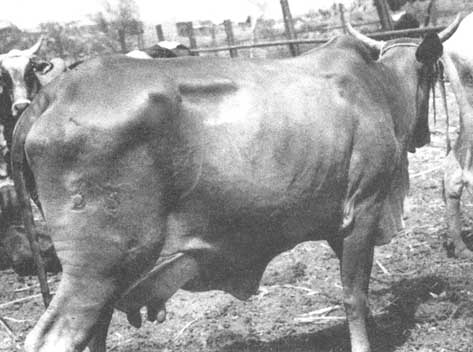
|
Original Research, B40
Musa AM, Idam NZ and Elamin KM. 2012.
Online J. Anim. Feed Res., 2(2): 215-217, 2012.
ABSTRACT: Effect of parity (PA) on live body weight, daily milk yield and lactation length of Sudanese Kenana cattle breed were investigated using a surveyed random sample comprised of (200) animals on different numbers of parities, animals were reared on natural pastures. All parameters were determinated by standard statistical analysis models with multivariate ANOVA when daily milk yield (DMY), Live body weight (LBwt) and lactation length (LL) as response and parity numbers (PA1, PA2, PA3 and PA4) as independent (P≤0.05). The results revealed that parities had a significant effect on all quantitative parameters that investigated. These differences between observed means were separated using Duncan multiple range tests with equal variances assumed. This suggests that parities could be used as independent factor for estimation of quantitative parameters with relatively high accuracy in Sudanese Kenana cattle breed.
Key words: Parity, Live body weight, Daily Milk Yield, Lactation length, Kenana Cattle, Sudan
|

|

